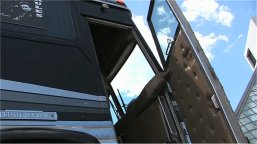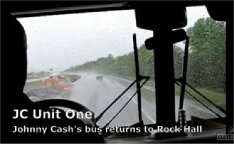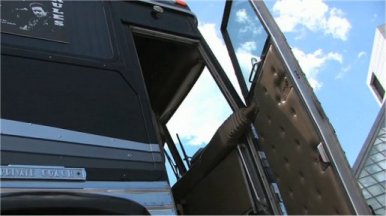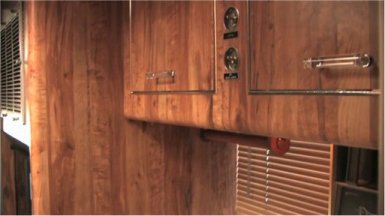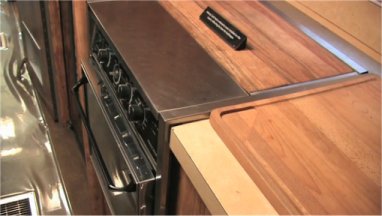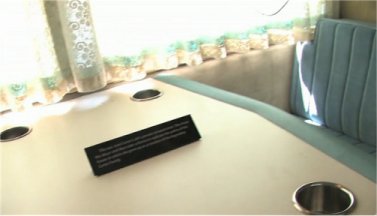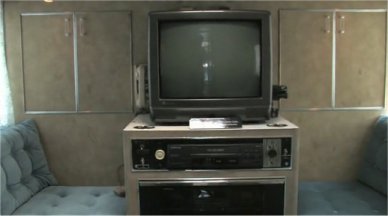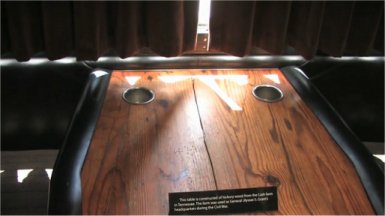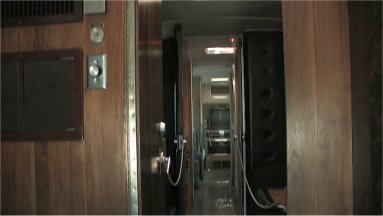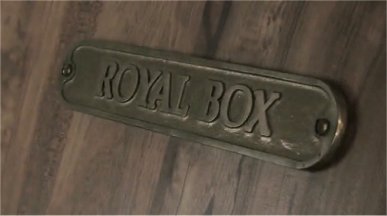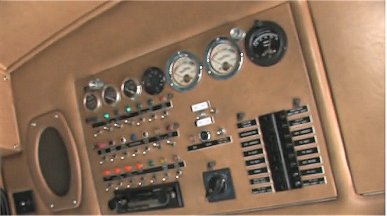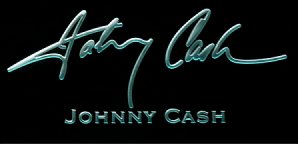Johnny Cash's tour bus returns to
Rock and Roll Hall of Fame and Museum
The
Plain Dealer ~ May 19, 2010

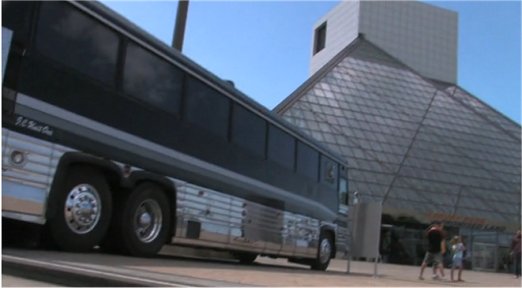 Johnny Cash referred to his tour bus as his "cocoon." It's now parked outside
the Rock and Roll Hall of Fame and Museum. Who could resist a ride from
the Man in Black?
Johnny Cash referred to his tour bus as his "cocoon." It's now parked outside
the Rock and Roll Hall of Fame and Museum. Who could resist a ride from
the Man in Black?
OK, so Johnny Cash himself didn’t personally extend the invitation.
Nonetheless, when the Rock and Roll Hall of Fame and Museum offered to
have me take a spin aboard the late country icon’s tour bus, I jumped at
the chance. As we boarded the luxury coach on Tuesday morning, three museum
staffers and I were greeted with a hearty “Hello!” by driver Woody Melton,
the Rock Hall’s logistics expert. It was his job to get Cash’s bus from
Point A (a secret garage in Mentor, where the vehicle is kept during cold-weather
months) to Point B (the Rock Hall itself, where museum visitors can tour
the bus from May through October).
The windshield wipers weren’t working as JC Unit One – Cash’s name for
his tricked-out ride -- sped along Interstate 90 west in the rain. Otherwise,
all systems were go. “If I was to say what it’s like to hold the steering
wheel – very powerful,” Melton said. “It’s kind of an old girl. I’m giving
it respect. It does leak a little water, a little oil, a little air, but
they’re all part of its age and ambience. . . . For the most part, it runs
wonderful.”
Cash purchased the 40-foot MCI bus in 1979 and had it customized in
Columbus. All told, he spent more than $553,000 on it. He and his family
members had their own private compartments. Cash slept up front, in a nook
with a table made of hickory from the Cash farm in Tennessee. Legend has
it that the farm was General Ulysses S. Grant’s headquarters during the
Civil War.
Cash’s wife, June Carter Cash, decorated her perch with white lace curtains
and powder-blue seats, a nod to the parlor of her childhood home. On the
door to her compartment, a plaque reads: “ROYAL BOX.” Cash stole it from
a theater in England for his bride, whom he nicknamed “Queenie.”
Their son, John Carter Cash, slept in the back of the bus. Each compartment
has its own stereo and television, complete with remote-controlled antennas.
Among the other amenities is a rotisserie oven, which allowed Cash to get
his barbecue fix.
He toured constantly, putting more than 1 million miles on the bus.
“This is pretty much where he spent the last part of his life,” said Meredith
Rutledge, the Rock Hall’s assistant curator. “He had several homes, but
he always thought of JC Unit One as his home away from home.”
Cash referred to the bus as his “cocoon” in his autobiography. “I have
a home that takes me anywhere I need to go, that cradles me and comforts
me, that lets me nod off in the mountains and wake up in the plains: my
bus, of course,” he wrote.
Riding aboard the very same bus as it made its way toward downtown Cleveland
was no small thrill. If these walls could talk, what tales would they tell?
The story about the walls themselves is a good one. The coach’s mahogany
panels and doors are made of wood from Cash’s estate in Jamaica, where
exporting exotic hardwood is prohibited. Cash smuggled the wood into the
United States by making it into crates.
After June Carter Cash died in 2003, Johnny sold the bus. Apparently,
it held too many memories. A few months later, Cash died of complications
from diabetes. He was 71.
Cash, who got his start in the 1950s making rockabilly hits for Sun
Records, was inducted into the Rock Hall in 1992. JC Unit One became part
of the museum’s permanent collection three years ago. It was a gift from
private collectors Dave and Esther Wright.
When the Man in Black’s rolling sanctuary pulled up to the Rock Hall
on Tuesday, the overcast weather seemed fitting. Under gray skies and a
steady drizzle, Melton clutched the steering wheel with gloved hands as
he carefully parked the bus on the plaza outside the museum, where music
history lives and breathes. And sometimes belches diesel.
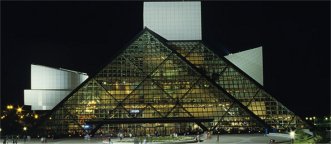
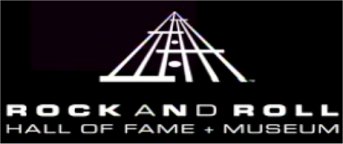
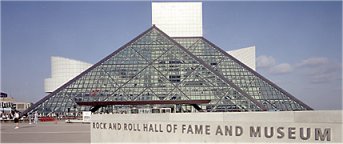



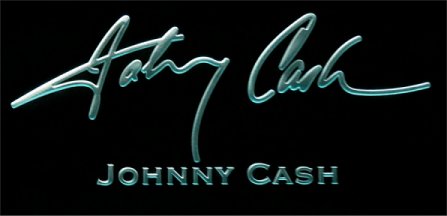
![]()
